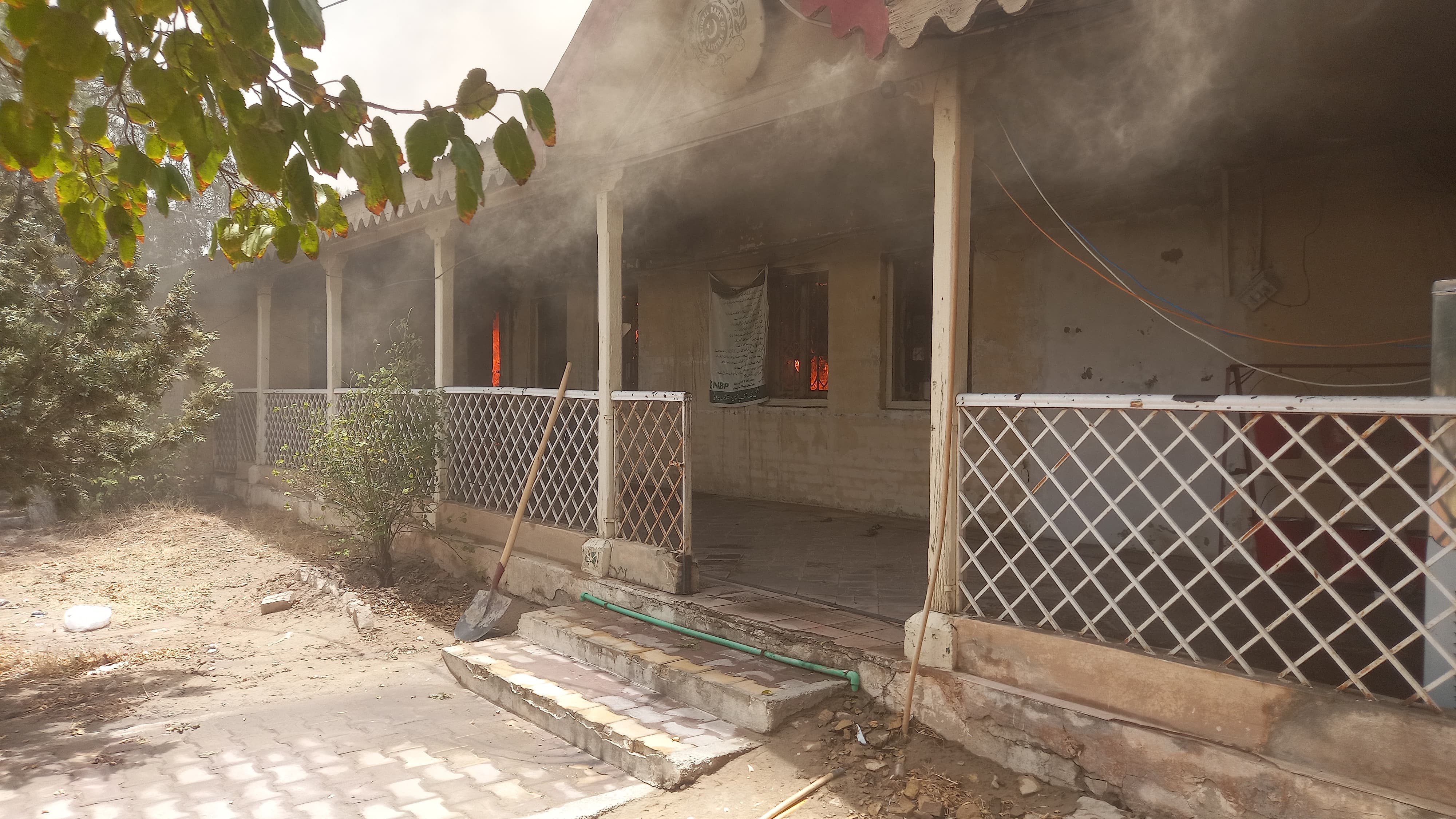RiazHaq
Senator (1k+ posts)
The latest GDP figures in terms of current US dollars released by the World Bank for 2017 put Pakistan's GDP at $305 billion, India's at $2,597 billion and China's at $12,237 billion. The World Bank also lists where the gross domestic products of each country in current US dollars stood in 1960.

GDP Growth in Current US$ 1960-2017. Source: World Bank
Economic Growth Since 1960:
According to the report released in June, 2018 shows that Pakistan's GDP has grown from $3.7 billion in 1960 to $305 billion in 2017, or 82.4 times. In the same period, India's GDP grew from $37 billion in 1960 to $2,597 billion in 2017 or 71.15 times. Both South Asian nations have outpaced the world GDP growth of 60 times from 1960 to 2017.
While Pakistan's GDP growth of 82X from 1960 to 2017 is faster than India's 71X and it appears impressive, it pales in comparison to Malaysia's 157X, China's 205X and South Korea's 382X during the same period.
Economic Growth Since 1998:
In spite of all of the multiple challenges on several fronts that Pakistan continues to face, the country's 5X GDP growth over the last two decades is not too shabby when compared with India's 6.5X jump in the same period. Here are the figures for several countries from Spectator Index:
China: 13X growth in GDP from $1 trillion in 1998 to $13.1 trillion in 2018
India: 6.5X growth in GDP from $400 billion in 1998 to $2.6 trillion in 2018
Pakistan: 5X growth in GDP from $62 billion in 1998 to $310 billion in 2018
United States: 2.2X growth in GDP from $9 trillion in 1998 to $20 trillion in 2018
Japan: 1.25X growth in GDP from $4 trillion in 1998 to $5 trillion in 2018
Per Capita Incomes:
Pakistan has not done as well in terms of per capita income growth for several reasons including poor governance and corruption since 2008 and faster population growth than in China, India and other countries. Per Capita income in Pakistan grew 22% since 2012, half of the 43% growth in India during the same period. China topped with 48% in per capita income since 2012.
Here are per capita income growth figures for selected countries since 2012:
China: 48%, India: 43%, Turkey: 32%, Indonesia: 29%, Pakistan: 22%, UK: 15%, US: 15%, Japan: 15%, Germany: 13%, Canada: 13%, France: 11%, Saudi Arabia: 10%, Greece: 9.5%, Russia: 8%, Italy: 8%, Nigeria: 7.5% and Brazil: 0%.
Per Capita GDP Comparison. Source: Hindustan Times
Pakistan has lagged its peers in per capita income growth over the last 5 decades. Pakistan's economic performance is especially disappointing relative to Asian Tigers like Malaysia and South Korea. Pakistan was on a similar trajectory as the Asian Tigers during 1960s under Gen Ayub Khan's rule. GDP growth in this decade jumped to an average annual rate of 6 percent from 3 percent in the 1950s, according to Pakistani economist Dr. Ishrat Husain. Dr. Husain says: "The manufacturing sector expanded by 9 percent annually and various new industries were set up. Agriculture grew at a respectable rate of 4 percent with the introduction of Green Revolution technology. Governance improved with a major expansion in the government’s capacity for policy analysis, design and implementation, as well as the far-reaching process of institution building.7 The Pakistani polity evolved from what political scientists called a “soft state” to a “developmental” one that had acquired the semblance of political legitimacy. By 1969, Pakistan’s manufactured exports were higher than the exports of Thailand, Malaysia and Indonesia combined."
Pakistan Growth By Decades. Source: National Trade and Transport Facility
Since 1947, Pakistan has seen three periods of military rule: 1960s, 1980s and 2000s. In each of these decades, Pakistan's economy has performed significantly better than in decades under political governments. The worst decade for Pakistan's economy was 1990s, also known as the lost decade, when the GDP grew just 4% as Benazir Bhutto and Nawaz Sharif took turns to mismanage it.
Pakistan's GDP growth in decades under military rule has been 1.5-2.5% faster on average than under civilian rule. Though the difference of 1.5% in GDP growth appears small, it would have made a huge difference when compounded over multiple decades and put Pakistan in the ranks of Asian Tigers.
Summary:
Pakistan has defied repeated dire forecasts of doom and gloom since its independence. According to the report released in June, 2018 shows that Pakistan's GDP has grown from $3.7 billion in 1960 to $305 billion in 2017, or 82.4 times. In the same period, India's GDP grew from $37 billion in 1960 to $2,597 billion in 2017 or 71.15 times. Both South Asian nations have outpaced the world GDP growth of 60 times from 1960 to 2017. Pakistan's economy has grown 500% over the last two decades in spite of political corruption and serious security challenges and instability created by the Afghan war next door and Indian sponsored proxy war against it. Pakistan's GDP growth in decades under military rule has been 1.5-2% faster on average than under civilian rule. Though the difference of 1.5% in GDP growth appears small, it would have made a huge difference when compounded over multiple decades and put Pakistan in the ranks of Asian Tigers.
http://www.riazhaq.com/2018/07/pakistan-gdp-growth-1960-2017-how-does.html

GDP Growth in Current US$ 1960-2017. Source: World Bank
Economic Growth Since 1960:
According to the report released in June, 2018 shows that Pakistan's GDP has grown from $3.7 billion in 1960 to $305 billion in 2017, or 82.4 times. In the same period, India's GDP grew from $37 billion in 1960 to $2,597 billion in 2017 or 71.15 times. Both South Asian nations have outpaced the world GDP growth of 60 times from 1960 to 2017.
While Pakistan's GDP growth of 82X from 1960 to 2017 is faster than India's 71X and it appears impressive, it pales in comparison to Malaysia's 157X, China's 205X and South Korea's 382X during the same period.
Economic Growth Since 1998:
In spite of all of the multiple challenges on several fronts that Pakistan continues to face, the country's 5X GDP growth over the last two decades is not too shabby when compared with India's 6.5X jump in the same period. Here are the figures for several countries from Spectator Index:
China: 13X growth in GDP from $1 trillion in 1998 to $13.1 trillion in 2018
India: 6.5X growth in GDP from $400 billion in 1998 to $2.6 trillion in 2018
Pakistan: 5X growth in GDP from $62 billion in 1998 to $310 billion in 2018
United States: 2.2X growth in GDP from $9 trillion in 1998 to $20 trillion in 2018
Japan: 1.25X growth in GDP from $4 trillion in 1998 to $5 trillion in 2018
Per Capita Incomes:
Pakistan has not done as well in terms of per capita income growth for several reasons including poor governance and corruption since 2008 and faster population growth than in China, India and other countries. Per Capita income in Pakistan grew 22% since 2012, half of the 43% growth in India during the same period. China topped with 48% in per capita income since 2012.
Here are per capita income growth figures for selected countries since 2012:
China: 48%, India: 43%, Turkey: 32%, Indonesia: 29%, Pakistan: 22%, UK: 15%, US: 15%, Japan: 15%, Germany: 13%, Canada: 13%, France: 11%, Saudi Arabia: 10%, Greece: 9.5%, Russia: 8%, Italy: 8%, Nigeria: 7.5% and Brazil: 0%.
Per Capita GDP Comparison. Source: Hindustan Times
Pakistan has lagged its peers in per capita income growth over the last 5 decades. Pakistan's economic performance is especially disappointing relative to Asian Tigers like Malaysia and South Korea. Pakistan was on a similar trajectory as the Asian Tigers during 1960s under Gen Ayub Khan's rule. GDP growth in this decade jumped to an average annual rate of 6 percent from 3 percent in the 1950s, according to Pakistani economist Dr. Ishrat Husain. Dr. Husain says: "The manufacturing sector expanded by 9 percent annually and various new industries were set up. Agriculture grew at a respectable rate of 4 percent with the introduction of Green Revolution technology. Governance improved with a major expansion in the government’s capacity for policy analysis, design and implementation, as well as the far-reaching process of institution building.7 The Pakistani polity evolved from what political scientists called a “soft state” to a “developmental” one that had acquired the semblance of political legitimacy. By 1969, Pakistan’s manufactured exports were higher than the exports of Thailand, Malaysia and Indonesia combined."
Pakistan Growth By Decades. Source: National Trade and Transport Facility
Since 1947, Pakistan has seen three periods of military rule: 1960s, 1980s and 2000s. In each of these decades, Pakistan's economy has performed significantly better than in decades under political governments. The worst decade for Pakistan's economy was 1990s, also known as the lost decade, when the GDP grew just 4% as Benazir Bhutto and Nawaz Sharif took turns to mismanage it.
Pakistan's GDP growth in decades under military rule has been 1.5-2.5% faster on average than under civilian rule. Though the difference of 1.5% in GDP growth appears small, it would have made a huge difference when compounded over multiple decades and put Pakistan in the ranks of Asian Tigers.
Summary:
Pakistan has defied repeated dire forecasts of doom and gloom since its independence. According to the report released in June, 2018 shows that Pakistan's GDP has grown from $3.7 billion in 1960 to $305 billion in 2017, or 82.4 times. In the same period, India's GDP grew from $37 billion in 1960 to $2,597 billion in 2017 or 71.15 times. Both South Asian nations have outpaced the world GDP growth of 60 times from 1960 to 2017. Pakistan's economy has grown 500% over the last two decades in spite of political corruption and serious security challenges and instability created by the Afghan war next door and Indian sponsored proxy war against it. Pakistan's GDP growth in decades under military rule has been 1.5-2% faster on average than under civilian rule. Though the difference of 1.5% in GDP growth appears small, it would have made a huge difference when compounded over multiple decades and put Pakistan in the ranks of Asian Tigers.
http://www.riazhaq.com/2018/07/pakistan-gdp-growth-1960-2017-how-does.html
Last edited:


























